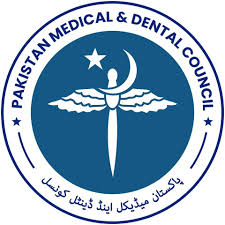Heart Rate Variability in Patients with Coronary Artery Disease and Effect of Percutaneous Coronary Angioplasty
DOI:
https://doi.org/10.37018/JFJMU/1278Keywords:
Coronary artery disease, Stable and unstable angina, Cardiac autonomic dysfunction, Heart rate variability, Percutaneous coronary angioplastyAbstract
Background: In coronary artery disease (CAD), the balance between the sympathetic and parasympathetic nervous systems is disturbed with sympathetic predominanace. Sympathetic over-activity is eliminated through percutaneous coronary angioplasty (PCA). Heart rate variability is a novel method for evaluating cardiac autonomic dysfunction. The study investigated the impact of percutaneous coronary angioplasty (PCA) on cardiac autonomic dysfunction by comparing heart rate variability patterns in stable and unstable angina patients before and after the procedure.
Subjects and methods: An experimental study involving 34 males with stable angina (Group 2), 34 males with unstable angina (Group 3), and 34 healthy males (Group 1) was carried out at Punjab Institute of Cardiology, Lahore, between July 2018 and August 2019. While patients with angina underwent PCA, the healthy group did not. The Holter DMS 300-3A was utilised to record the ECG for five minutes. For Groups 2 and 3, ECG was recorded before PCA, as well as 24 hours and two weeks following angioplasty. Cardioscan Premier12 by DM Software was used to analyse the Holter ECG recordings in both the time (SDNN, RMSSD, NN50, PNN50, and SDNN: RMSSD) and frequency domain indices (HF, LF, and LF: HF). The data was statistically analyzed using the computer programme IBM SPSS statistics version 20.
Results: HRV metrics SDNN, RMSSD, NN50, pNN50, LF, HF each (p-value <0.001) were increased and LF: HF (p-value <0.001) was lower in Group 1 than in angina groups. Group 2 and Group 3 showed statistically significant improvements (p-value<0.05) in HRV metrics SDNN, HF, and LF: HF 24 hours after PCA.
Conclusion: Patients with stable and unstable angina have reduced heart rate (HRV) compared to normal individuals. However, after PCA, HRV parameters increase, indicating that illness diminishes HRV, but revascularization through PCA improves it.
Published
How to Cite
Issue
Section
License
The Journal of Fatima Jinnah Medical University follows the Attribution Creative Commons-Non commercial (CC BY-NC) license which allows the users to copy and redistribute the material in any medium or format, remix, transform and build upon the material. The users must give credit to the source and indicate, provide a link to the license, and indicate if changes were made. However, the CC By-NC license restricts the use of material for commercial purposes. For further details about the license please check the Creative Commons website. The editorial board of JFJMU strives hard for the authenticity and accuracy of the material published in the journal. However, findings and statements are views of the authors and do not necessarily represent views of the Editorial Board.

















